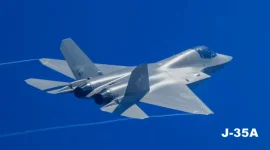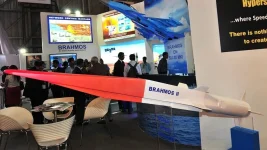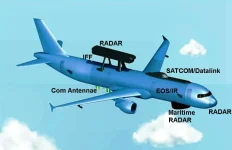- Views: 3K
- Replies: 23
Amidst growing reports of Pakistan's potential plans to acquire the Chinese J-35A stealth fighter jet, India is reportedly shifting its strategy for addressing advanced aerial threats.
Rather than focusing on acquiring expensive foreign stealth aircraft, India is choosing a more practical and budget-friendly option: strengthening its own capabilities to detect stealth aircraft. This strategic move prioritises early warning and effective interception methods.
Central to this new approach is an anti-stealth Very High Frequency (VHF) radar system developed within India. This radar is a product of the Defence Research and Development Organisation (DRDO) and manufactured by Bharat Electronics Limited (BEL) in Ghaziabad.
The system, mounted on a robust TATA 6x6 High Mobility Vehicle, is specifically engineered to counter the main advantage of fifth-generation fighter aircraft – their ability to evade conventional radar, often referred to as stealth. Fifth-generation fighters represent the latest in aerial combat technology, incorporating features like advanced stealth, integrated avionics, and superior manoeuvrability.
The Indian-developed VHF radar operates differently from common S-band, X-band, or Ku-band radars. It uses longer wavelengths which are less disturbed by the special shapes and materials used in stealth aircraft design. This makes the VHF radar more successful in spotting stealth planes such as the J-35, the American F-35, or the Russian Su-57.
While precise details about its performance are not publicly disclosed, information available from open sources suggests this radar can track airborne targets from over 100 nautical miles (approximately 185 kilometres) away. This capability is crucial for providing early warning and allowing time to coordinate interception efforts.
The principle behind VHF radar's effectiveness lies in the fact that stealth aircraft are primarily designed to be less visible to higher frequency radar systems; longer VHF waves can often detect these aircraft more readily.
For enhanced operational flexibility, the entire radar system is mounted on two TATRA vehicles. This design allows for quick setup and movement, enabling the radar to cover different areas or change its location based on changing needs on the ground. Such mobility not only provides flexibility in deployment but also increases the radar's chances of survival if attacked, as it can be moved quickly to avoid being targeted.
The J-35A, also known as the FC-31, is China's advanced fifth-generation stealth fighter jet, developed for use on aircraft carriers and for sale to other countries.
If the Pakistan Air Force (PAF) adds the J-35A to its fleet, it would mark the PAF's first stealth aircraft. This acquisition would represent a notable advancement in its military technology, potentially reducing the current technological advantage held by the Indian Air Force (IAF). Reports in early 2024 suggested Pakistan's Air Chief had expressed interest in acquiring the FC-31 as part of PAF's modernization efforts.
Featuring a design that reduces radar reflection, internal compartments for weapons, and sophisticated electronic systems, the J-35A could pose a challenge to India's established air dominance, especially in contested zones. However, like many stealth aircraft, the J-35A's stealth features are most effective against traditional radar frequencies, making it vulnerable to systems like India's new VHF radar.
India's focus on VHF-band anti-stealth radar systems offers a direct response to this potential threat. While these radars might not provide the exact targeting information needed for immediate weapon firing, they supply vital early warning and tracking data.
This information can then be combined with data from other sensors, such as advanced AESA (Active Electronically Scanned Array) radars and IRST (Infrared Search and Track) systems, to build a comprehensive, multi-layered anti-stealth defence network. AESA radars offer enhanced tracking and resistance to jamming, while IRST systems passively detect heat signatures from aircraft.
This strategic pivot by India, from considering the purchase of fifth-generation fighters to improving its sensor and radar networks, mirrors a wider trend in modern military planning. By investing in a broad surveillance and detection system, India aims to remove the element of surprise that stealth technology is designed to offer. This approach allows for detection and tracking even before an aircraft comes within striking range.
Instead of allocating vast sums for a small number of foreign stealth aircraft, India's strategy aims for wider surveillance coverage and better preparedness across its extensive borders.
Furthermore, these indigenous radar systems are expected to support India’s own upcoming AMCA (Advanced Medium Combat Aircraft) program. The AMCA is India's ambitious project to develop its own fifth-generation stealth fighter, and these radars will form part of an integrated air defence system for it.
As Pakistan potentially prepares to introduce J-35A stealth fighters in the coming years, India is readying a counter-strategy that is both cost-effective and technologically sound, based on advanced radar technology and strategic mobility. The DRDO-BEL VHF Anti-Stealth Radar is a key element in this developing plan, which aims not just to match stealth capabilities but to effectively neutralize them.




